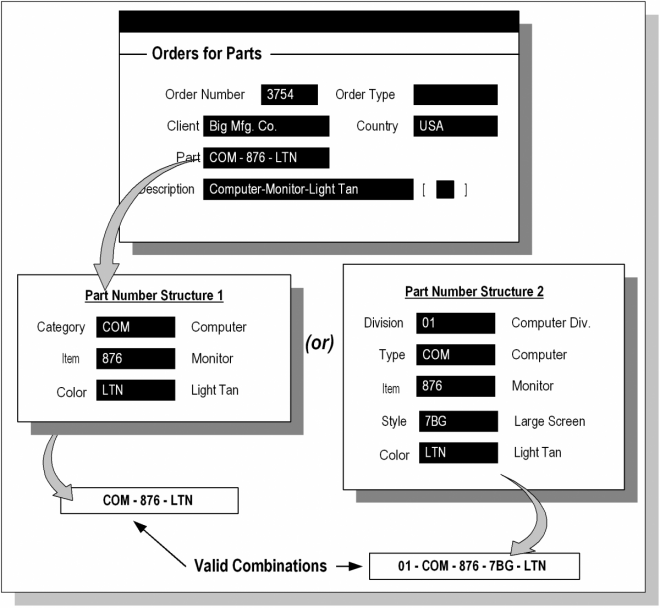Flexfields Combination

A combination is a particular complete code, or combination of segment values that makes up the code, that uniquely identifies an object. For example, each part number would be a single combination, such as PAD–YEL–11×14 or 01–COM–876–7BG–LTN (where the dash ”–” is the segment separator). If you had ten parts you would define ten combinations. A valid combination is simply a combination that may currently be used (that is, it is not out of date or disabled). A combination would have different segments depending on the flexfield structure being used for that combination. Any combination is associated with only one particular flexfield structure (arrangement of segments).
Note that many of the Oracle Applications products (and their documentation) do not necessarily refer to key flexfield combinations as ”combinations”. They may refer to combinations using the name of the entity or the key flexfield itself. For example, Oracle Assets uses a key flexfield called the ”Asset Key Flexfield” and refers to one of its combinations as ”an asset key” or ”an asset key flexfield”. In another example, Oracle General Ledger and other Oracle Applications products generally use the term ”account” or ”GL account” to refer to combinations of the Accounting Flexfield.
Combinations Table
Each key flexfield has one corresponding table, known as the combinations table, where the flexfield stores a list of the complete codes, with one column for each segment of the code, together with the corresponding unique ID number (a code combination ID number or CCID) for that code. Then, other tables in the application have a column that stores just the unique ID for the code. For example, if you have a part number code, such as PAD–YEL–11×14, the ”Parts” combinations table stores that code along with its ID, 57494. If your application allows you to take orders for parts, you might then have an ”Orders” table that stores orders for parts. That ”Orders” table would contain a single column that contains the part ID, 57494, instead of several columns for the complete code PAD–YEL–11×14.

Leave a Reply
Want to join the discussion?Feel free to contribute!